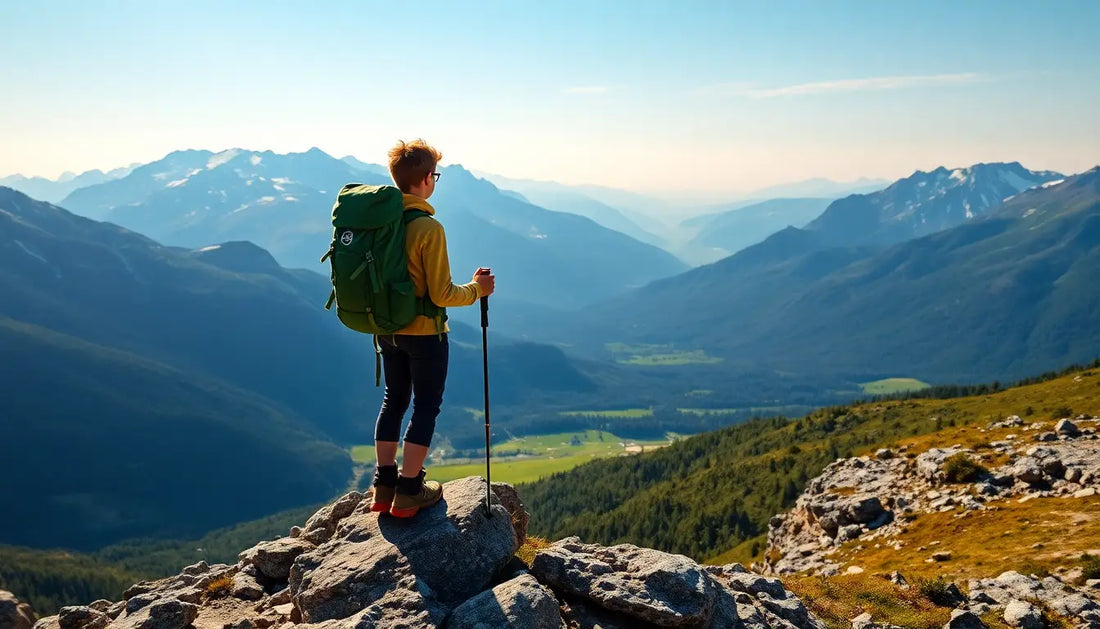
A Beginner's Guide to Backpacking: Planning Your First Multi-Day Hike
TF AdventureEmbarking on your first multi-day backpacking adventure can be an exhilarating yet daunting prospect. Whether you're drawn to the allure of untamed wilderness, the challenge of self-reliance, or the promise of breathtaking vistas, the journey ahead requires careful planning and preparation. As the owner of TF Adventure, your one-stop shop for outdoor camping and mountain and jungle adventure equipment and accessories, I'm here to guide you through the essential steps to ensure your first backpacking trip is a resounding success.
Choosing Your Destination
The first and perhaps most crucial step in planning your backpacking adventure is selecting the right destination. Consider factors such as your fitness level, experience, and the type of terrain you're comfortable navigating. Research popular backpacking trails in your region, taking note of the difficulty, distance, and elevation gain. For beginners, it's generally advisable to start with shorter, less strenuous routes that offer a mix of natural beauty and manageable challenges.
When researching potential destinations, pay close attention to the weather patterns, seasonal conditions, and any permit or reservation requirements. This will help you plan your trip accordingly and ensure you're prepared for the specific challenges you may face.
Packing the Essentials
Packing for a multi-day backpacking trip requires a delicate balance between minimalism and preparedness. Every item you carry will add weight to your pack, so it's crucial to carefully consider each piece of gear and only bring what is absolutely necessary.
At TF Adventure, we offer a comprehensive selection of high-quality backpacking equipment and accessories to ensure you're equipped for the journey ahead. Some of the essential items you'll want to include in your pack are:
Shelter
- Lightweight, compact tent or tarp
- Sleeping bag rated for the expected temperatures
- Sleeping pad for insulation and comfort
Cooking and Hydration
- Portable stove and fuel
- Cookware and utensils
- Water filtration system or purification tablets
- Reusable water bottles or hydration bladder
Navigation and Safety
- Topographic map of the area
- Compass and/or GPS device
- First-aid kit
- Emergency whistle and fire-starting kit
Clothing and Footwear
- Moisture-wicking base layers
- Insulating mid-layers
- Weatherproof outer layers
- Sturdy, broken-in hiking boots or shoes
- Extra socks and underwear
Personal Items
- Headlamp or flashlight with extra batteries
- Sun protection (hat, sunglasses, sunscreen)
- Insect repellent
- Toilet paper and trowel
- Camp chair or sit pad (optional)
Remember, the key to packing effectively is to choose lightweight, multi-purpose gear that will keep you comfortable and prepared for a variety of conditions. It's also a good idea to practice packing and unpacking your gear at home to ensure you can efficiently organize your backpack.
Route Planning and Navigation
Careful route planning is essential for a successful backpacking trip. Begin by researching the terrain, elevation changes, and potential obstacles along your chosen trail. Consult topographic maps and online resources to familiarize yourself with the route and identify potential campsites, water sources, and emergency access points.
When planning your daily mileage, factor in your fitness level, the difficulty of the terrain, and any planned stops or side excursions. It's generally recommended to start with shorter daily distances, especially if you're new to backpacking, and gradually increase as you gain experience.
Navigation is a critical skill for any backpacker, and it's important to be proficient in using a map and compass, as well as any GPS devices or apps you may be using. Practice these skills before your trip and be prepared to navigate even in the event of technology failures.
Campsite Setup and Meal Preparation
Choosing and setting up your campsite is an essential part of the backpacking experience. Look for level, well-drained areas that are at least 200 feet from any water sources, trails, or other campsites. Familiarize yourself with the principles of Leave No Trace, which emphasize minimizing your impact on the natural environment.
When it comes to meal preparation, focus on lightweight, high-calorie, and easy-to-prepare foods that will provide the energy you need for your hikes. Dehydrated meals, energy bars, and instant oatmeal are all excellent options. Be sure to pack the necessary cooking equipment, such as a portable stove, pots, and utensils, and plan your meals accordingly.
Fitness and Group Dynamics
Backpacking requires a certain level of physical fitness, so it's important to start training well in advance of your trip. Incorporate cardiovascular exercises, strength training, and hiking with a loaded pack into your routine to build the endurance and muscle strength needed for the journey.
If you're planning to hike with a group, it's crucial to establish clear communication and set expectations early on. Discuss the group's hiking pace, decision-making processes, and any specific needs or concerns. Maintaining a positive, supportive dynamic will help ensure everyone enjoys the experience and stays safe.
Conclusion
Embarking on your first multi-day backpacking adventure is a thrilling and rewarding experience that will challenge you both physically and mentally. By following the steps outlined in this guide, you'll be well on your way to planning a successful and memorable trip. Remember, the team at TF Adventure is here to support you every step of the way, providing the high-quality gear and expert advice you need to make your backpacking dreams a reality.
So, what are you waiting for? Start planning your first multi-day hike today and get ready to immerse yourself in the beauty and wonder of the great outdoors!
